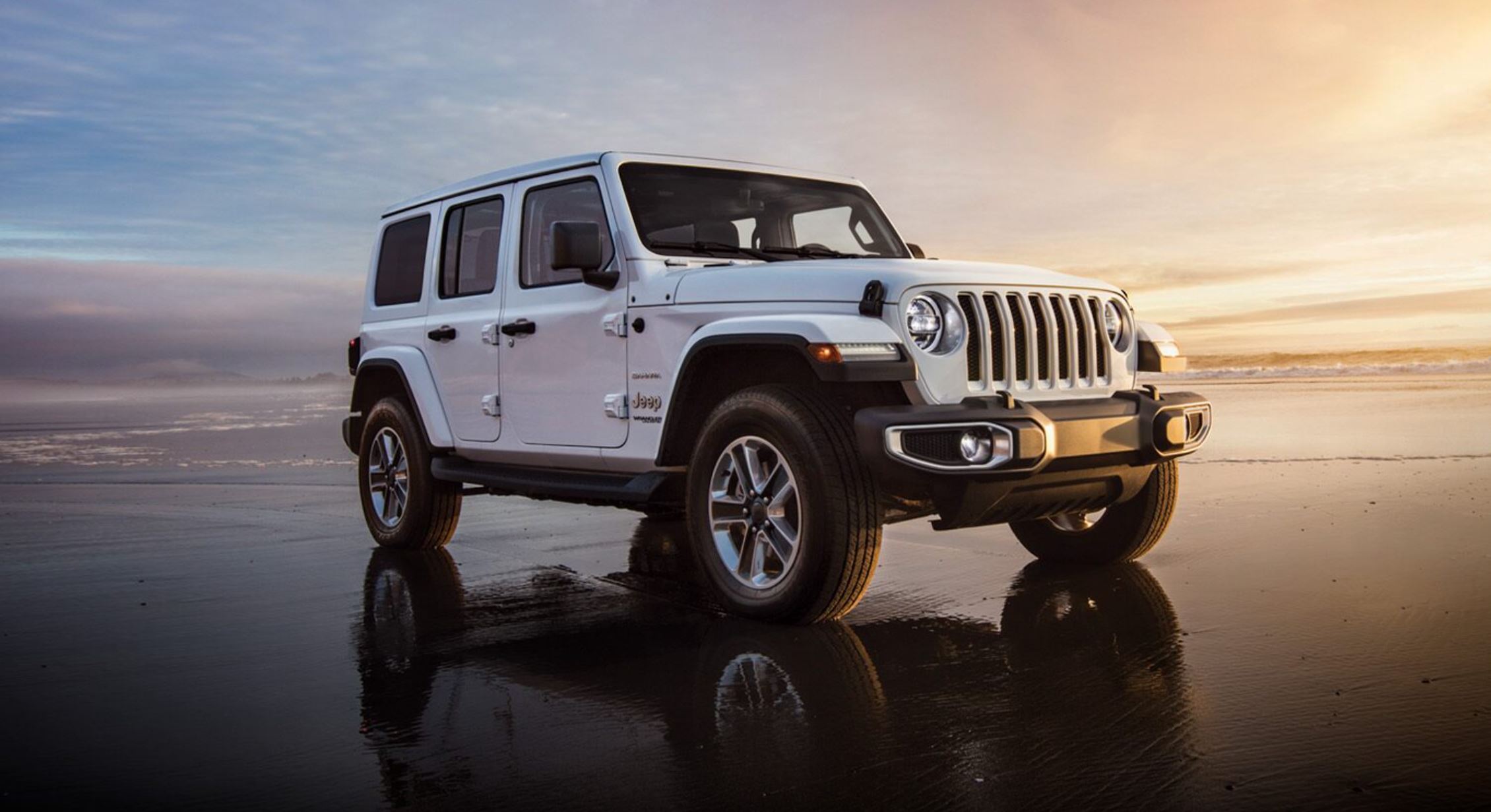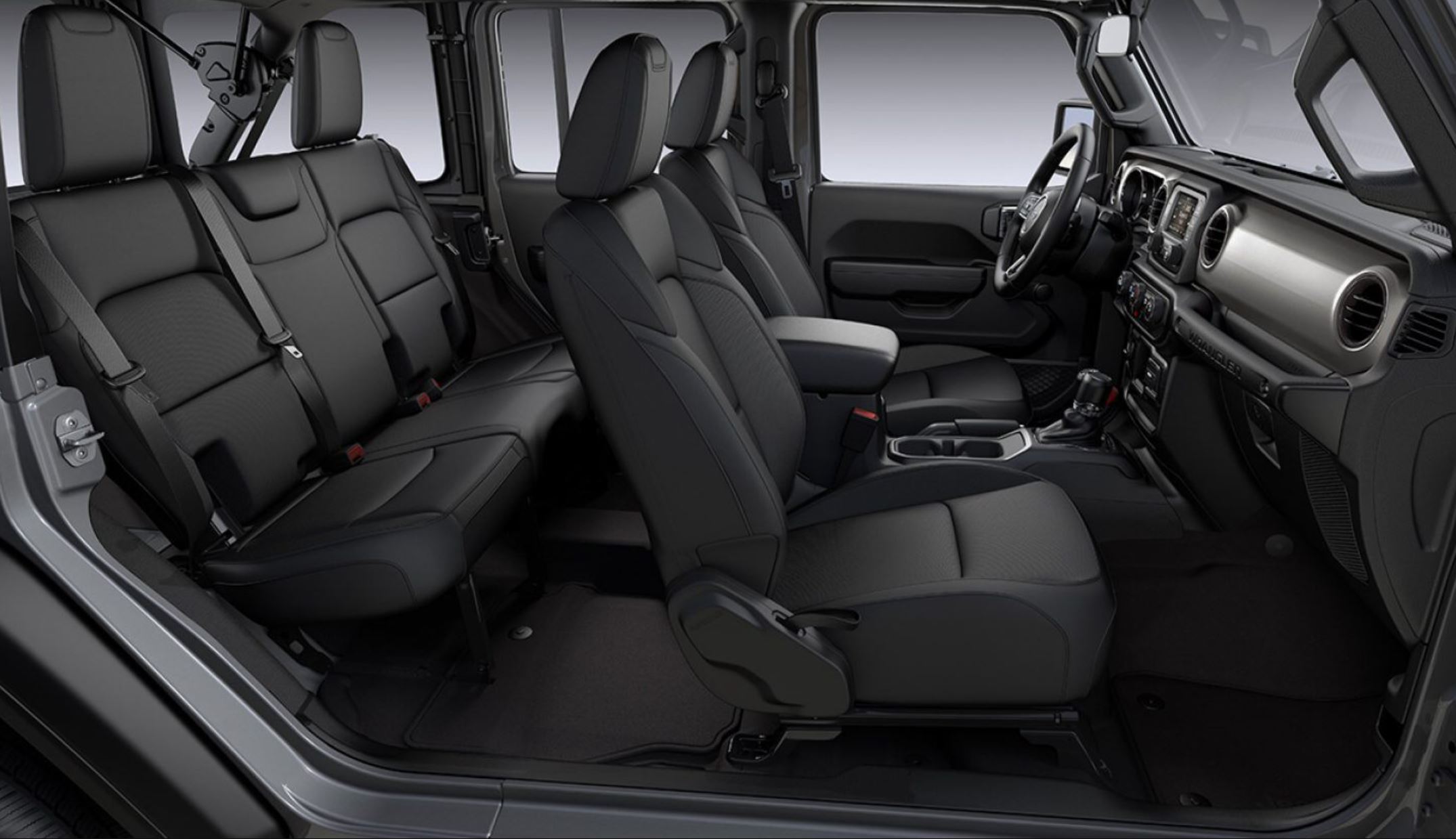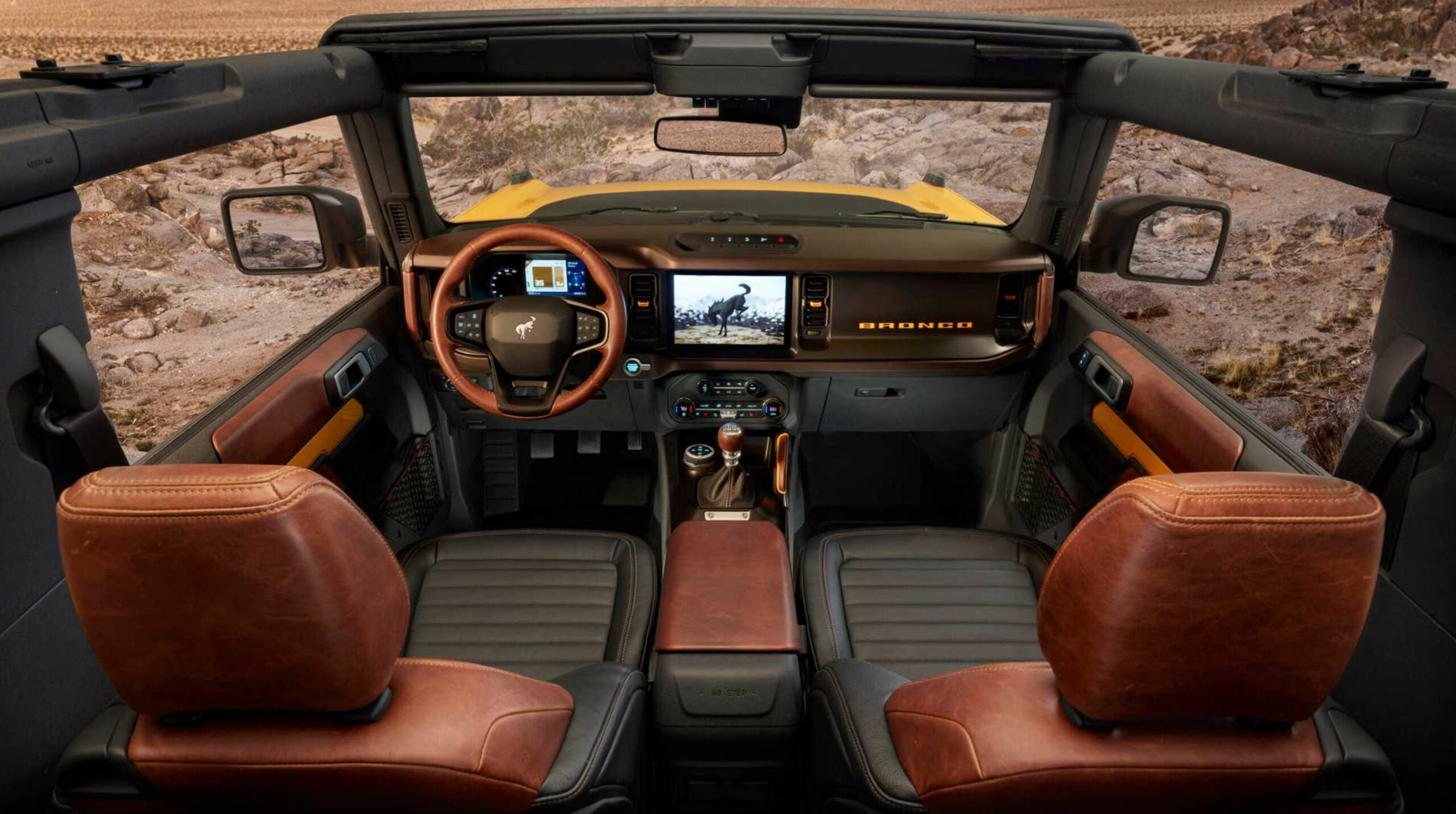An average sedan provides a simple commute from point A to point B, but when you are planning to cross rivers and mudholes, you need something gnarly to keep you pushing through your adventure. And for that, we have Toyota’s iconic SUV vehicles, the FJ Cruiser, and the Toyota 4Runner. Although the FJ Cruiser has been discontinued in the U.S, you can still buy it in the Middle East.
I’m a mechanical engineer with a deep passion for cars and a love for driving manuals. In this article, I will compare the Toyota FJ Cruiser vs 4Runner, check out a few alternatives, and then help you decide which one suits you the best.
Bottom Line Up Front
The FJ Cruiser and the 4Runner are the same under the hood. However, the FJ Cruiser lags. The FJ Cruiser has aged in terms of looks, efficiency, and technology, whereas the 4Runner, as a mid-sized, 4-door SUV with modern features is a more practical choice.
Main Differences Between the Toyota FJ Cruiser and Toyota 4Runner
The Main Differences Between the Toyota FJ Cruiser and Toyota 4Runner are:
- The Toyota FJ Cruiser’s 4.0-liter V6 produces 281 pound-feet of torque and 270 horsepower, whereas the 4Runner’s 4.0-liter V6 pumps out 278 pound-feet of torque and 270 horsepower.
- The Toyota FJ Cruiser has a fixed 2-row, 5-seat arrangement, whereas the 4Runner comes standard with the same with an optional third row for seating up to 7 passengers.
- The Toyota FJ Cruiser has a wheelbase and length of 105.9 and 183.9 inches, whereas those of the 4Runner measure 109.8 and 190.2 inches, respectively.
- The Toyota FJ Cruiser stands 72 inches tall and 75 inches wide, whereas the 4Runner has a width and height of 75.8 and 71.5 inches, respectively.
- The Toyota FJ Cruiser is currently available in 2 trims in the Middle East, whereas the 4runner is available in a total of 8 different trims.
- The Toyota FJ Cruiser offers an average fuel economy of 18mpg, whereas the 4Runner maintains it at 17.5 mpg.
- The Toyota FJ Cruiser offers a maximum approach and departure angle of 34 and 30 degrees, whereas the 4Runner falls a little short at 33 and 26 degrees, respectively.
- The Toyota FJ Cruiser can carry 42 gallons of fuel thanks to its dual-tank feature, whereas the 4Runner has a fuel tank capacity of 23 gallons.
- The Toyota FJ Cruiser was launched in 2007 and has carried the same design ever since, whereas the 4Runner was last redesigned in 2010.
- The Toyota FJ Cruiser has a cargo space capacity of 27.9 cubic feet behind the second-row and 67 cubic feet with the second-row folded, whereas the 4Runner offers much more practicality with a cargo space ranging from 47 cubic feet to 90 cubic feet when you fold the second-row seats.
- The Toyota FJ Cruiser has a turning diameter of 40.7 feet, whereas the 4Runner has that of 37.4 feet.
- The Toyota FJ Cruiser does not have modern driver safety features, whereas the 4Runner is equipped with the latest technology.
- The Toyota FJ Cruiser has a cramped rear-seat legroom of 31.2 inches, whereas the 4Runner offers a slightly better second-row legroom at 32.9 inches.
- The Toyota FJ Cruiser used to be the first choice for off-road enthusiasts. However, Toyota discontinued it due to declining sales and carried on with the 4Runner, which was a more practical SUV. Even today, the FJ Cruiser sold in the Middle East is the same as it was back in 2014.
Key Features of the Toyota FJ Cruiser
The FJ Cruiser is a retro-styled take on the original FJ40, which once used to be Toyota’s most sold vehicle in the U.S. For the 2022 model, the FJ Cruiser carries the original old design, with minor cosmetic changes.
The engine has remained the same throughout its lifetime; a 4.0-liter V6 coupled with a 5-speed automatic transmission which produces 281 pound-feet of torque and 270 horsepower and offers a maximum towing capacity of 5000 pounds. And to help you cover long distances, the FJ Cruiser now comes equipped with dual fuel tanks (23 gals and 19 gals) with a total capacity of 42 gallons.
The Toyota FJ Cruiser features basic technology such as keyless entry, a 12-inch infotainment touchscreen, Android Auto, Apple CarPlay, built-in navigation, crawl control, cruise control, a rear-view camera, front and rear parking sensors, and a rear fog lamp. And as far as safety is concerned, the FJ Cruiser comes equipped with vehicle stability control, tire pressure monitoring system, dual front airbags, and an anti-lock braking system.
For maximum trailblazing, you can get the FJ Cruiser Adventure trim, which gets tuned Fox suspension, Borla performance exhaust system, Bushwacker fender flares, and a 2” lift kit, while 17-inch alloy rims are standard on all trims.
Overall, the FJ Cruiser is an old contender in the mid-sized, off-road SUVs, which due to its outdated design and basic features, does not stand a chance in today’s competition.
Pros/Cons of the Toyota FJ Cruiser
Pros
• Tough and rough build.
• Worthy off-road capability.
• Rising resale value.
Cons:
• Outdated design.
• Cramped interior.
• No modern technology.
Key Features of Toyota 4Runner
The Toyota 4Runner is a legendary machine that has been built to stand hard as a rock with its old-fashioned body-on-frame chassis and a solid rear axle. The 4Runner was initially launched in 1984 and has received four design updates ever since. The last design update was made back in 2010, and till 2022, the 4Runner has been on the market with the same looks.
The 4Runner comes with a 4.0-liter V6 coupled with an old-school 5-speed automatic gearbox which makes 278 pound-feet of torque and 270 horsepower. This engine remains standard on all trims and provides a maximum towing capacity of 5000 pounds, which is enough for hauling small to medium trailers. Fuel economy is dreadful, rated at 16 mpg in the city and 19 mpg on the highway, and so is the 0-60 mph acceleration, which takes about 8 seconds.
The 4Runner, as a mid-sized SUV, focuses on providing value for money. It defines practicality, economy, and style on a budget. With a low maintenance cost and high service life, the Toyota 4Runner maintains its reputation as a successful family SUV.
Available in 10 colors, and 8 trims, the 4Runner provides plenty of options for the customer to choose from. And whether it may be the SR5 or TRD Pro, the 4Runner never fails to deliver on any journey.
The 4Runner’s interior makes way for many creature comforts, which makes the journey pleasant. Dual-zone automatic climate control with second-row vents, leather upholstery, keyless entry, 8-way powered driver seat with lumbar support, Android Auto, Apple CarPlay, 15-speaker JBL Premium Audio setup, built-in navigation, and an 8-inch infotainment touchscreen.
As a 5-passenger mid-sized SUV, the Toyota 4Runner tends to be an ideal, low-maintenance and reliable family vehicle. Adding an optional third row increases the overall seating capacity to 7, but those two extra seats are for kids only with a legroom of 29.3 inches. But the legroom in the front row is decent at 41.7 inches and tight in the second row at 32.9 inches. Cargo space, however, is sufficient for a family of 5, with 47.2 cubic feet of space behind the second row.
Toyota makes no compromise on safety, equipping the 4Runner with 8 airbags, Star Safety System, hill-start assist, and Toyota Safety Sense. Standard features also include lane departure alert, automatic high beams, front and rear parking sensors, dynamic radar cruise control, and a pre-collision system with pedestrian detection. The National Highway Traffic Safety Administration crash-tested the 4Runner and awarded it an overall 4 out of 5 stars, with 3 stars for rollover protection, 4 stars at front impact, and 5 stars at side crash protection. Similarly, the 4Runner received the top Good score from the Insurance Institute for Highway Safety on multiple crash tests.
Then there is the 4Runner TRD Pro trim; an off-road veteran. Equipped with hardcore suspension, the 4Runner TRD Pro makes its way across the meanest trails without tripping. Specifications include a part-time 4WD system with traction control, hill-start assist, multi-terrain select, crawl control, all-terrain tires, Fox high-performance shocks, tuned springs, a heavy-duty skid plate, and a locking rear differential. It also turns heads with exterior badging which says TRD Pro all over the body and interior.
Overall, the Toyota 4Runner provides a balanced combination of practicality and drive, with zero compromises on off-road capability.
Pros/Cons of the Toyota 4Runner
Pros
• Proven durability.
• Practical cargo space.
• Low maintenance, family SUV.
Cons
• Poor fuel efficiency.
• Basic modern features.
• Second-row legroom is cramped.
Other Alternatives to Consider
The Toyota FJ Cruiser was successful back when it was launched, but now due to lack of updates on design and features, the FJ Cruiser is not worth buying anymore.
On the other hand, the Toyota 4Runner is a practical and reliable SUV with proven off-road capability, but it lacks the modern road refinement other SUVs offer. Consider the alternatives the market has to offer before you decide on buying one for yourself.
Jeep Wrangler
The Jeep Wrangler combines serious off-roading with an adventurous ride with its removable top and doors and foldable windshield. The Jeep Wrangler turns heads with its iconic look and enjoys a huge fan base thanks to its rugged personality. Moreover, it comes in several trims and powertrain options, allowing you to be very specific as per your requirement.
The powertrain options start with a 2.0-liter inline-four turbo, which is suitable for medium power requirements. Thirsty for more? Well, you can go for the 3.6-liter V6 or the 3.0-liter turbodiesel V6 for maximum torque. A hybrid powertrain is also available for people looking for a fuel economy without compromising on 4×4 capability. Not enough? Then learn to tame the 6.4-liter Hemi V8 powered Wrangler Rubicon 392, which boasts 470 pound-feet of torque and 470 horsepower, clocking 0 to 60 mph in just 4.2 seconds. This is the meanest Wrangler you can buy.
Add the Xtreme Recon package to it to uplift your Wrangler with 35-inch all-terrain tires, a 4.88:1 axle ratio, a 1.5-inch lift kit with tuned shocks, and a reinforced swing gate. Altogether, the Xtreme Recon package increases your overall off-roading dimension; approach, break-over, and departure angles now stand at 47.4, 26.7, and 40.4 degrees, while water fording ability and ground clearance jump to 33.6 and 12.9 inches, respectively. All engines have a tow rating of 3500 pounds.
The Wrangler can take on any terrain, any time. It is more than just an SUV; it’s a lifestyle. Loved by the young and praised by the old, everyone seems to enjoy the Wrangler. And since it is loved around the world, the Wrangler has thousands of aftermarket customizations available. It also enjoys a great resale value.
However, it has a downside; the removable top and doors allow the interior cabin to be reasonably loud on the highway, making long drives a headache. Moreover, the sluggish steering and stiff suspension, which may be favorable off-road, would not please you on your way to the grocery store. It is a matter of give and take here; the Wrangler is perfect for enjoying off-road adventures, but as a daily driver, it fails to deliver comfort.
Overall, the Wrangler is at the top of the game when it comes to serious off-roading. However, its cramped interior, lack of modern features, and unrefined road manners make it unfavorable as a daily driver.
Ford Bronco
The Ford Bronco enters the market with one thing in mind; adventure. Following the footsteps of the Wrangler, the Bronco shares similar features, such as a removable top and doors. With chunky looks and a rugged build, the Bronco stands strong with the competition.
Three engine configurations are available; a 2.7-liter twin-turbo V6, a 2.3-liter turbo, and a 3-liter twin-turbo V6 which produces 440 pound-feet of torque and 418 horsepower coupled to a 10-speed automatic or 7-speed manual gearbox. All engines are rated with a towing capacity of 3500 pounds, which can be increased to 4500 pounds with the Bronco Raptor trim.
Off-road features include 37-inch bead-lock tires, locking differentials, independent front suspension, and 13.1-inches of ground clearance, to name a few. Concerning interior, the Bronco offers a 12-inch infotainment touchscreen, Apple CarPlay, Android Auto, built-in navigation, 360-degree camera, and a 10-speaker Bang and Olufsen premium audio setup.
Regarding safety, the Bronco pours in several driver-assist features; automatic high beams, hill-start assist, blind-spot monitoring, rear cross-traffic alert, evasive steering assist, automatic emergency braking, pedestrian detection, and adaptive cruise control.
The Ford Bronco still carries a noisy cabin, but the drive quality, cargo capacity, and comfort are better than that of the Wrangler.
FAQs
Question: Do 4Runners last forever?
Answer: That depends on you how well you manage your vehicle’s due maintenance. A Toyota Tundra ran 1 million miles, and when Toyota tested that specific model, it was 99% as good as new. Similarly, the Toyota 4Runner is made to outlast years of workload; all you need to do is make sure it gets its due maintenance on time.
Question: Why did Toyota discontinue the FJ Cruiser?
Answer: The FJ Cruiser was discontinued by Toyota due to decreasing sales. The idea of a second-generation FJ Cruiser was therefore dropped for the same reason.
Question: Will there be a 2022 FJ Cruiser?
Answer: Unfortunately, the FJ Cruiser was discontinued in 2014. However, you can buy a brand-new FJ Cruiser in the Middle East, but that is the same model that was sold in the U.S back in 2014.
Question: How many miles will FJ Cruiser last?
Answer: The FJ Cruiser will easily manage more than 300k miles, provided scheduled services and maintenance has been carried out.
Question: How many seats does an FJ Cruiser have?
Answer: The Toyota FJ Cruiser has a standard seating capacity of 5.
FJ Cruiser vs 4Runner: Which One Should You Buy?
The Toyota FJ Cruiser is a fun vehicle made for serious off-roading. Although it has been discontinued, its demand is rising. On the other hand, the Toyota 4Runner is actively on sale, and you can get your hands on a brand new one with your desired specs.
In summary, the 4Runner offers better drive quality and comfort, plus it’s equipped with the latest safety and driver-assist features. The FJ Cruiser does not stand a chance with its outdated design and equipment, but it sure does look cool.
Overall, the 4Runner is the winner in the current scenario.
- Best Tundra Front Bumper Replacements - December 4, 2022
- Best Toyota Tacoma Floor Mats Guide - November 25, 2022
- Best 4runner Roof Racks with Ladders - November 17, 2022









